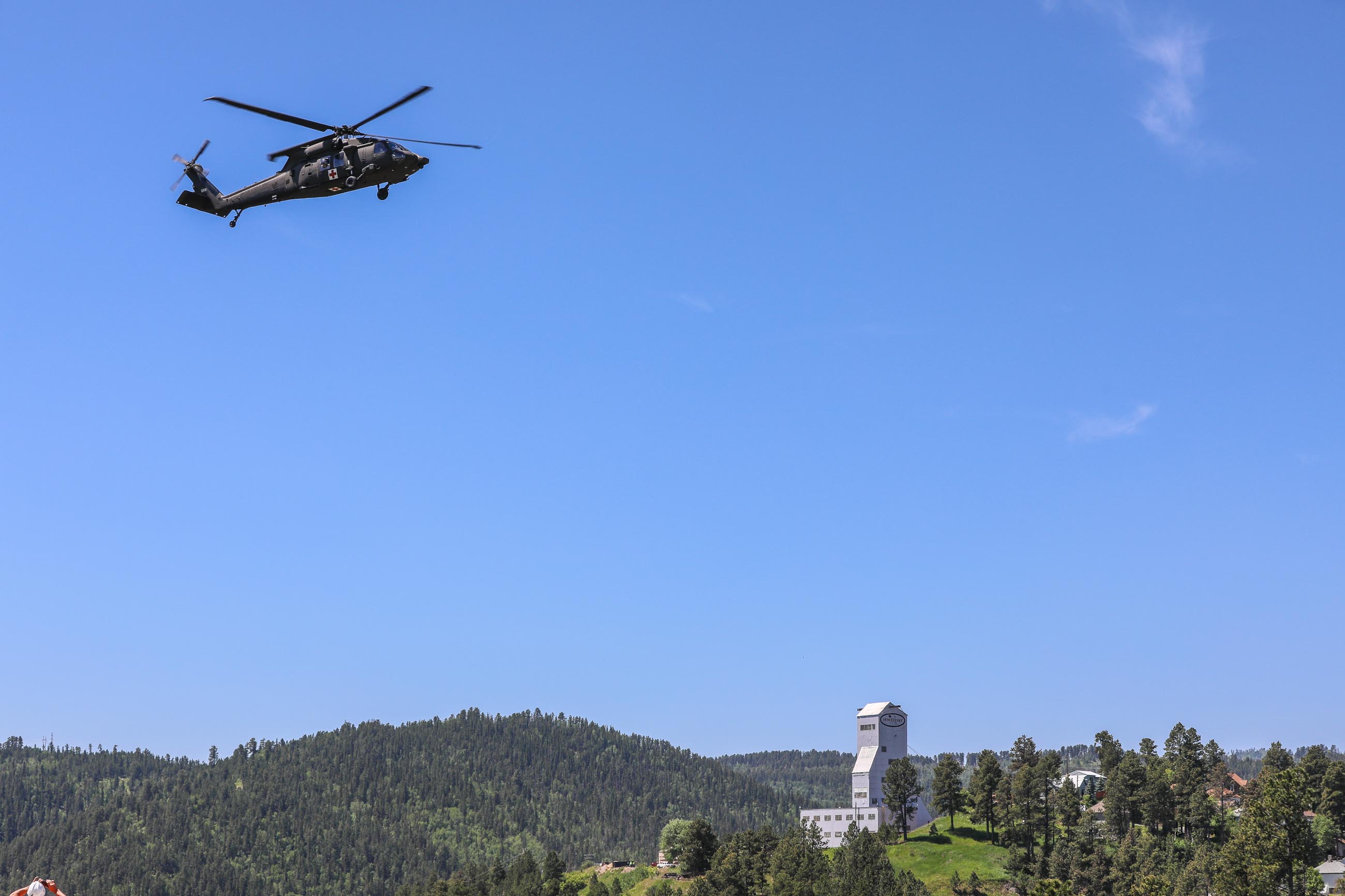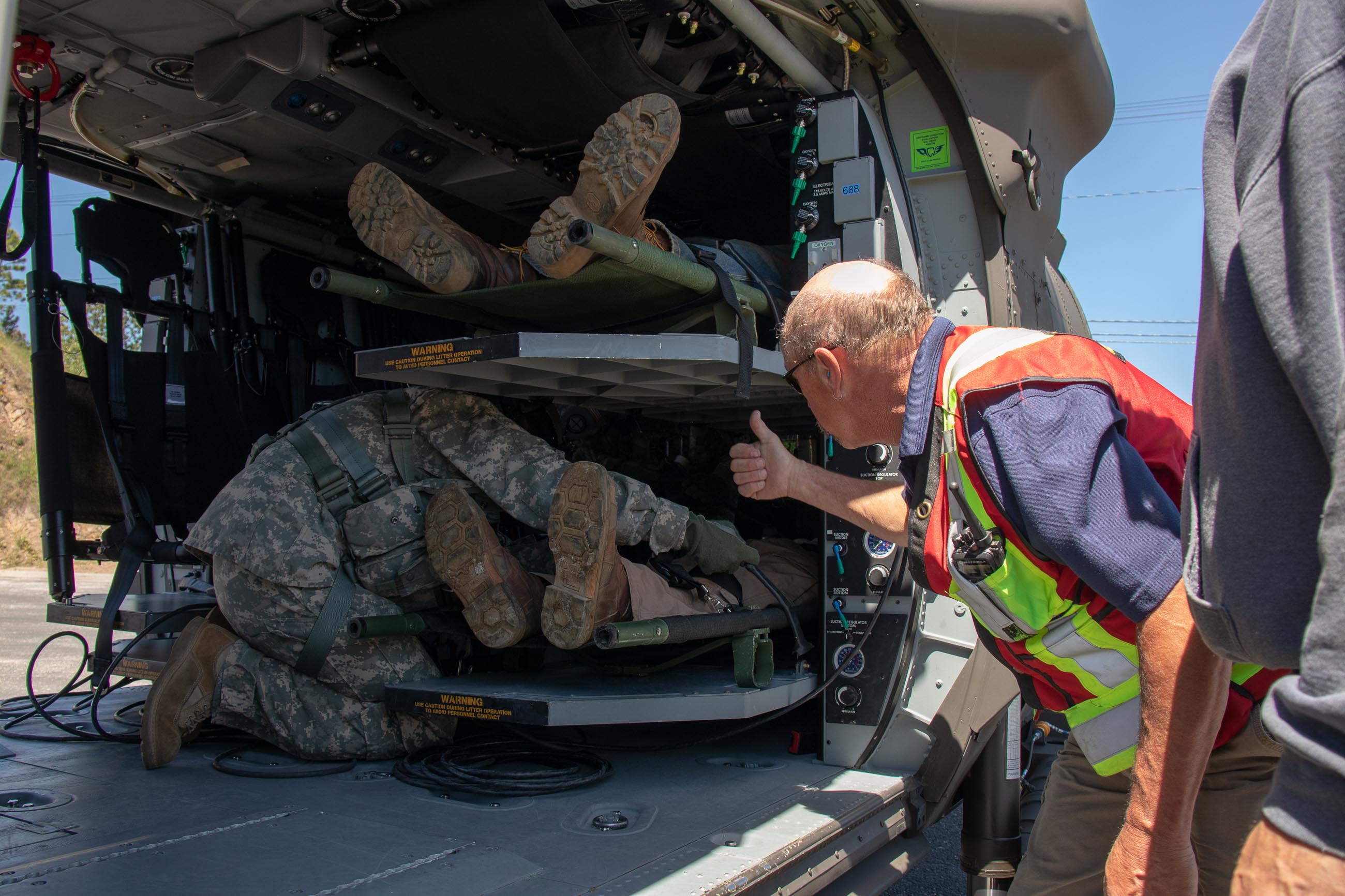
Photo: Sanford Lab Emergency Response Team members Luke Scott, Woody Hover, Derek Lucero (not pictured) and Mike Sprosty, Physician’s Assistant with CST Wyoming 84th carry a loaded stretcher from a medical helicopter.
The Black Hawk helicopter’s silhouette grew as it neared the Sanford Underground Research Facility’s Yates Complex. The rhythmic beating of the blades grew louder and the wind intensified as it hovered above, then landed, on the cleared parking lot. The eye-catching event was part of a two-day emergency response training held in tandem with Sanford Lab’s Emergency Response Team (ERT) and the South Dakota National Guard.
Designed and coordinated by the National Guard, the exercise, held June 12-13, involved a scenario that required the ERT to request help from the National Guard.

“There are multiple reasons we participate in these drills,” said Larry Jaudon, Sanford Lab’s Environment, Safety and Health director. “Foremost is that, in any underground situation, we owe it to our people to ensure we can evacuate and account for them safely."
The ERT completes evacuation drills quarterly. This drill, however, was more complex.
“While our ERT is highly and regularly trained to perform many kinds of rescue operations, there are some emergencies that require assistance from Civil Support Teams through the County Emergency Manager,” said Paul “Woody” Hover, emergency response team lead and site safety specialist.
In this scenario, the joint operation revolved around a simulated underground emergency—one that triggered a response from the 82nd South Dakota National Guard and the 84th Wyoming National Guard Civil Support teams. The teams worked alongside Sanford Lab’s ERT to address safety concerns underground, evacuate personnel and perform a medical helicopter evacuation.
“It is important to encourage familiarity between teams from the National Guard and our own response teams,” Hover said. “It gives our facility the opportunity to practice a larger-scale drill than our quarterly evacuations, but also gives the National Guard the unique challenge of responding in an underground environment.”

Through the drills, the teams become familiar with, test and evaluate each other’s existing procedures, tactics and equipment, all while seeking ways to improve emergency planning.
“The more you train with outside agencies, the smoother any potential incident will go,” Hover said.